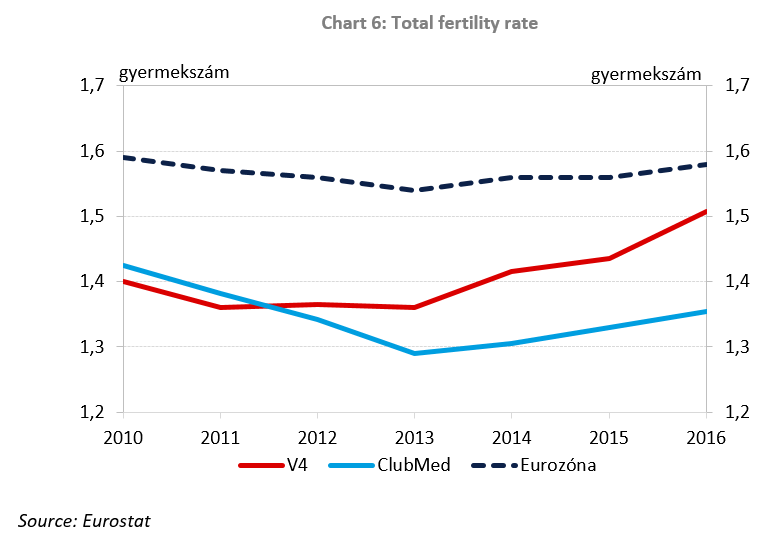5+1 charts on why the visegrád region is the engine of growth in the european union
EnglishDániel PalotaiNoémi VéghIn recent years, the Visegrád region has proved to be the centre of growth in the European Union. The seventh article of the MNB’s 5+1 convergence series focuses on the convergence of the Visegrád region. Based on the factors under review, the fact that the region has been rapidly converging towards advanced European countries is attributable to successful crisis management and economic stimulus measures. Disciplined fiscal policy and reforms encouraging a general reduction in the shadow economy have contributed to keeping the Visegrád region’s convergence sustainable in the future.
In the past roughly two decades, the economic weight of the Visegrád countries within Europe has more than doubled. Going forward, the economic role played by the Visegrád region may be even greater. The region grew by over 5 per cent in 2017, whereas growth has outstripped advanced European countries by approximately 2 percentage points in recent years. In the past five years, the region’s countries were characterised by a balanced growth structure, as convergence was driven by strong domestic demand and investment growth.
Thanks to successful crisis management and consistent economic reforms, the Visegrád region has entered a convergence path. Economic output as measured by GDP per capita reached and surpassed the pre-crisis level earlier than in the US or the European Union. By contrast, the economic performance of Mediterranean countries falls short of pre-crisis levels.
Chart 1: Per capita GDP (USD (PPP, 2011), USA=100)
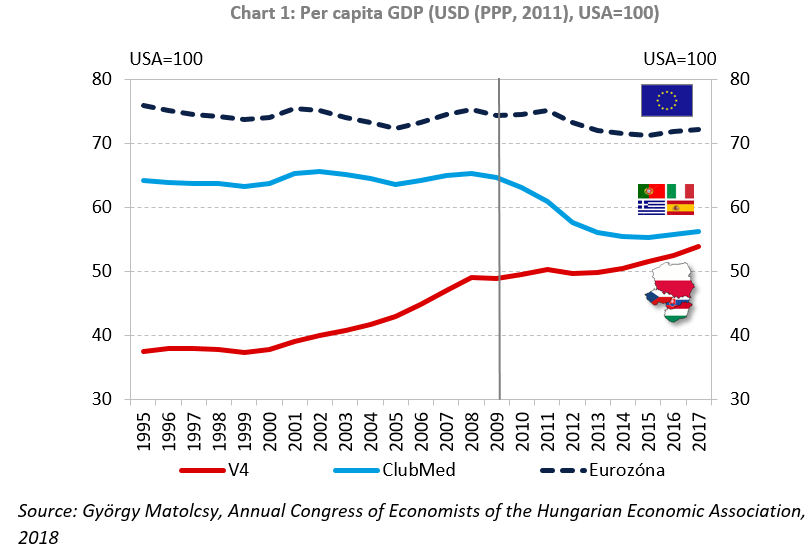
Although the region used to lag far behind the European Union in terms of average earnings, gross average earnings have expanded dynamically in the recent period.
Since 2010, the growth rate of gross average earnings in the Visegrád region was almost double the figure for the euro area. The reduction in taxes on labour and the expansion in employment both led to substantially higher wages in the countries of the region. In 2017, the growth rate of gross average earnings in Hungary was close to 13 per cent, which was due to the tight labour market and the wage agreement, especially the increase of the minimum wage and the guaranteed minimum wage, as well as the reduction in the social contribution tax.
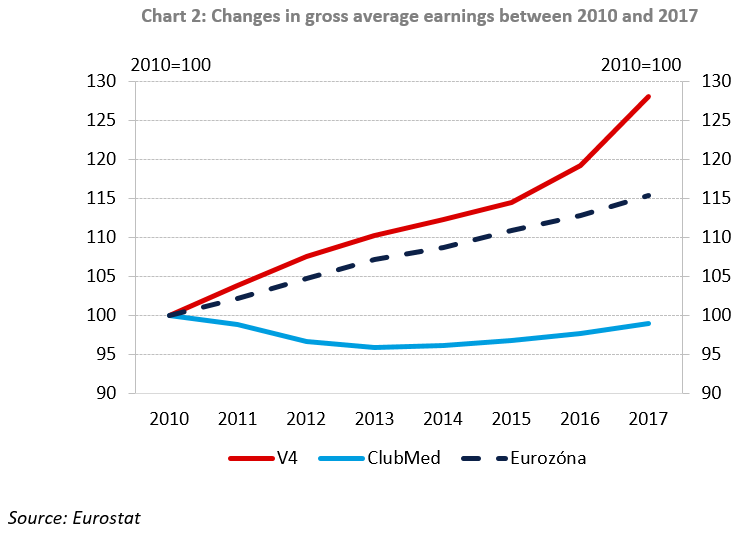
The debt ratio is lower in the Visegrád region than in the euro area, and it is also falling.
The average debt-to-GDP ratio in the Visegrád countries is more than 80 percentage points lower than in the Mediterranean countries and 30 percentage points lower than in the euro area. Driven by favourable economic activity, debt reduction in the Visegrád Group is helped by the snowball effect as well as fiscal policy, which exerts its impact through the primary balance. Owing to the legacy of growing indebtedness after 2002, Hungary still has the highest government debt level among the Visegrád countries.
However, due to the fiscal turnaround after 2010, Hungary is the only country in the European Union where the debt-to-GDP ratio has declined in each year since 2011. Between 2010 and 2017, Hungary’s debt ratio showed the fourth largest decline in the European Union. Among the Visegrád countries, the Czech Republic and Poland saw their debt-to-GDP ratio fall slightly, whereas in Slovakia it has increased by almost 10 percentage points since 2010. Meanwhile, it surged by 30 percentage points in the Mediterranean countries.
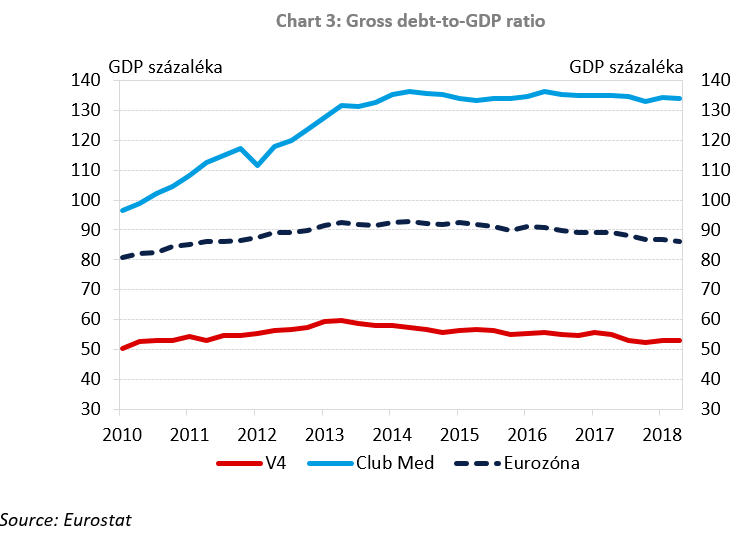
Rapid employment growth provided the basis for economic growth in the Visegrád countries.
Prior to the crisis, the employment rate in the Visegrád region fell short of the euro area average; however, due to the continuous employment gains, in 2017 it was already higher than the euro area average or the Mediterranean average. The Hungarian employment rate showed the second largest improvement in the European Union. The substantial expansion in employment was strongly influenced by the reduction in taxes on labour. In contrast to the highly progressive personal income tax system in Mediterranean countries, the countries in the region usually have one or, in some cases, two tax brackets.
It has to be noted that within the European Union, the marginal tax wedge, which expresses the amount of tax levied on one unit of extra income, diminished the most in Hungary, by 18 per cent, between 2010 and 2017. In 2017, the marginal tax wedge of the Visegrád countries was 8.5 per cent lower than the euro area average.
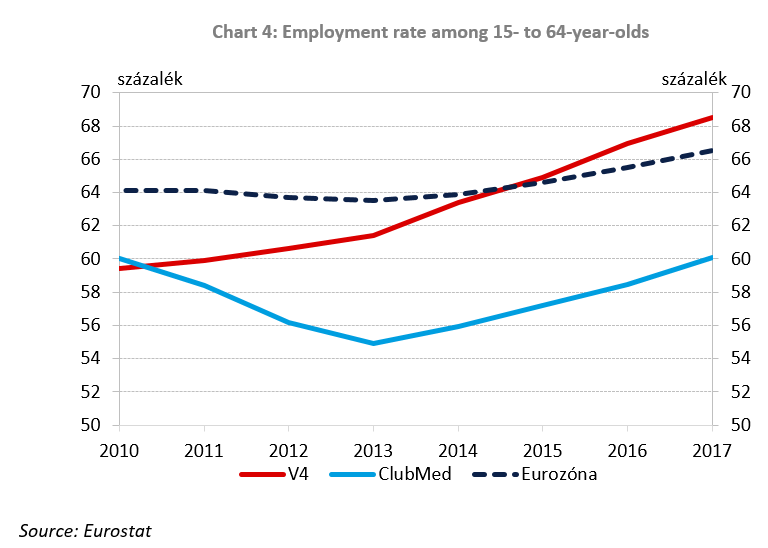
In parallel with the expansion in employment, the unemployment rate fell in the countries of the region.
All the countries in the Visegrád Group have made huge strides in stimulating employment, which is also reflected in the falling unemployment rate. The historic trough of the unemployment rate and higher employment levels show that most Visegrád countries have come close to full employment. By contrast, the difficult recovery of Mediterranean countries demonstrates that they were unable to achieve the pre-crisis levels in the unemployment rate and employment.
In the Visegrád region, favourable labour market developments boosted fiscal revenues on the whole through the higher personal income tax and social security contributions, which was also supported by measures aimed at combating tax evasion and reducing the shadow economy. Encouraging work and reducing the hidden economy supports fiscal stability and paves the way for further competitiveness measures.
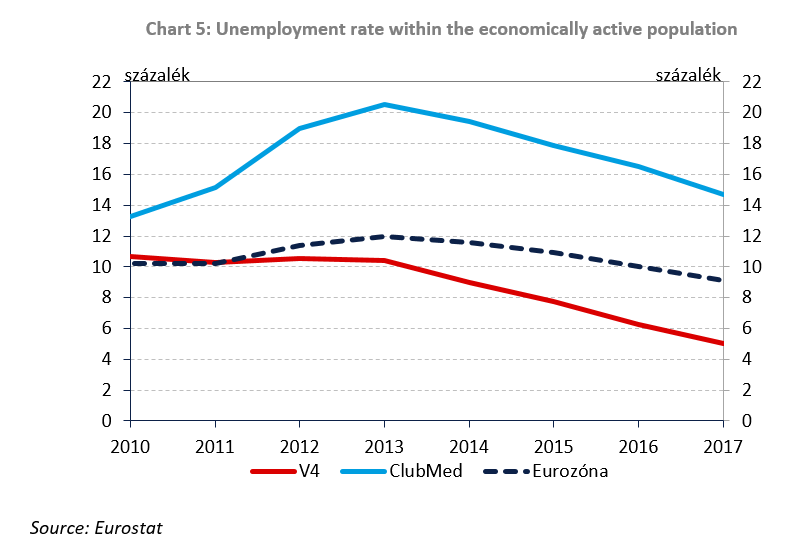
Several family policy measures have been introduced to improve demographic developments of the Visegrád region, with a special focus on promoting child-rearing.
The low fertility rate presents a challenge in all European Union Member States. The Visegrád region is characterised by a growing birth rate and a rising fertility rate, facilitated by targeted family support schemes. Although in most European countries the average age when women have their first child has gradually increased, this figure was 2 years higher in the Visegrád countries than the European Union average (29) in 2016.
At the same time, the Mediterranean countries (except Portugal), have all seen their birth rates decline, and in parallel with the declining fertility rate, women on average have their first child 1.5 years later than in the European Union. The growing fertility rate may contribute to a change in unfavourable demographic developments over a longer time horizon.
